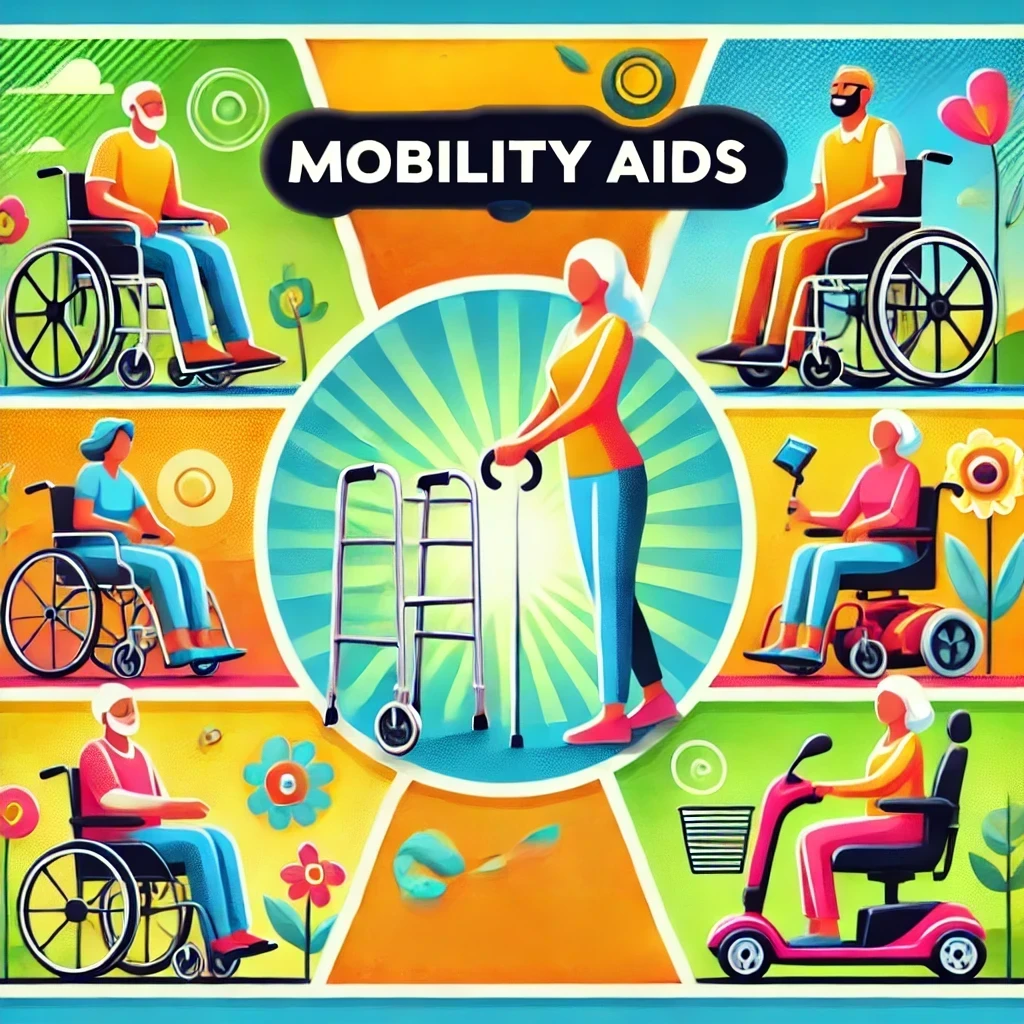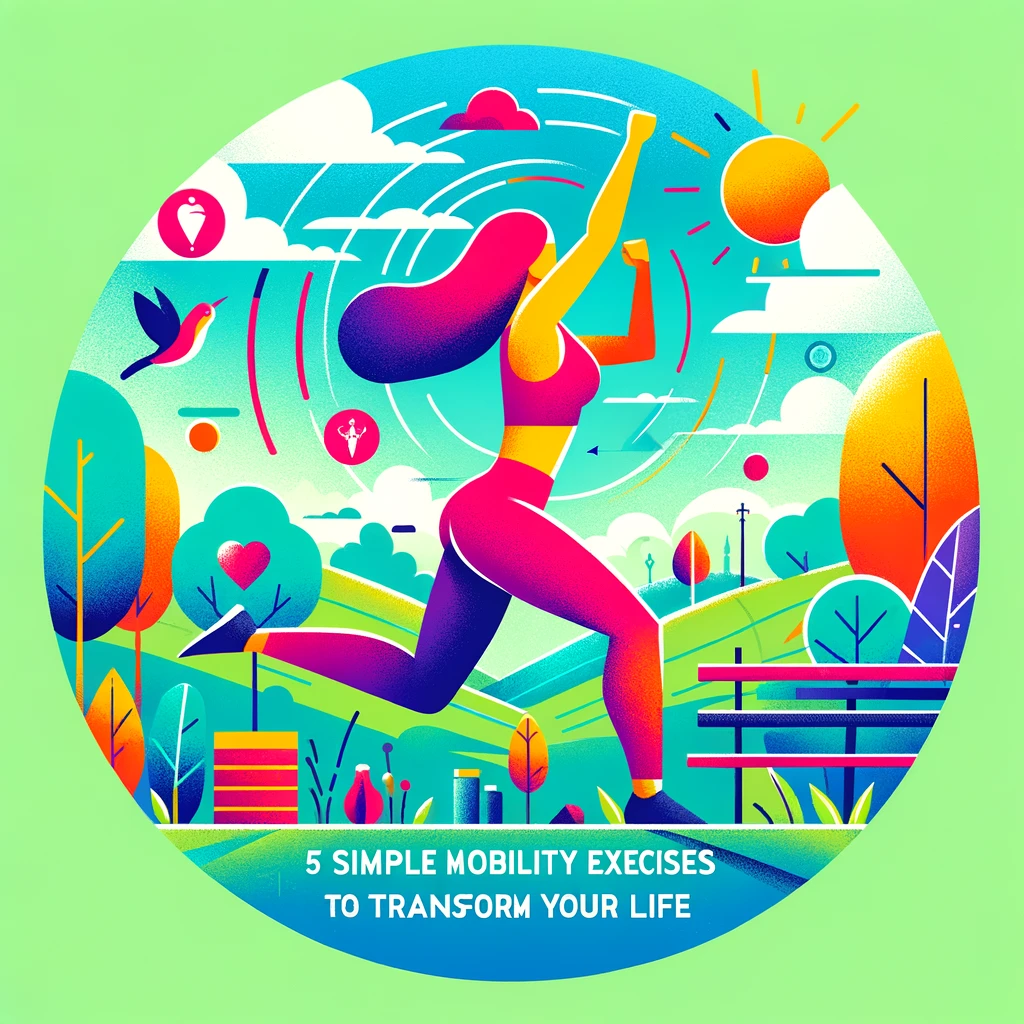
Table of Contents
Mobility aids play a crucial role in enhancing the quality of life for individuals with mobility challenges. These devices are more than just tools for movement; they are enablers of independence, freedom and improved well-being. For those living with disabilities, injuries or age-related mobility issues, the right mobility aids can make a significant difference in daily living, providing the support needed to navigate their environments safely and confidently.
The range of mobility aids available today is extensive, catering to various needs and preferences. From basic canes and walkers to advanced motorized wheelchairs and scooters, each device offers unique benefits that can greatly enhance the user’s ability to perform everyday tasks. These aids not only facilitate movement but also help reduce the risk of falls and other injuries, contributing to overall safety.
Moreover, the psychological benefits of using mobility aids cannot be overstated. By restoring a sense of autonomy, these devices help improve mental health, boosting self-esteem and reducing feelings of isolation and dependency. The empowerment that comes from being able to move freely and participate in social and recreational activities is invaluable.
In this article, we will explore the various types of mobility aids, their benefits and how they significantly contribute to the quality of life for many people. We’ll delve into the features and advantages of different mobility devices, provide tips on selecting the right aid for individual needs, and discuss how these tools can transform the daily lives of those who rely on them. Through understanding and proper utilization, mobility aids can truly be life-changing, opening up new possibilities for activity and engagement.
Understanding Mobility Aids
Definition and Types
Mobility aids are devices designed to assist individuals who have difficulties moving around. These aids range from simple walking sticks to complex electric wheelchairs. They are essential for people with temporary injuries, chronic conditions or disabilities.
History of Mobility Aids
The history of mobility aids dates back centuries, with evidence of early crutches and canes found in ancient Egyptian artifacts. Over time, these devices have evolved, incorporating advanced materials and technology to better meet the needs of users.
Types of Mobility Aids
Walking Aids
Canes: Canes are one of the simplest and most commonly used mobility aids. They provide balance and support for individuals who can walk but need additional stability.
Crutches: Crutches are designed to take the weight off the lower body and are often used by people recovering from leg injuries or surgeries.
Walkers: Walkers offer more support than canes or crutches and are ideal for individuals who need significant assistance with balance and stability.
Wheelchairs
Manual Wheelchairs: These wheelchairs are powered by the user or an attendant and are suitable for individuals with enough upper body strength to propel themselves.
Electric Wheelchairs: Electric wheelchairs are motorized and can be operated with a joystick or other control mechanisms, making them suitable for individuals with limited upper body strength.
Mobility Scooters
Mobility scooters are ideal for individuals who can sit upright and operate a steering mechanism. They are often used for longer distances and outdoor mobility.
Prosthetics and Orthotics
Prosthetics replace missing limbs, while orthotics support and enhance the function of existing limbs. Both play a critical role in restoring mobility and improving quality of life.
Benefits of Mobility Aids
Increased Independence
Mobility aids allow individuals to perform daily activities independently, reducing the need for constant assistance from others.
Improved Physical Health
Regular use of mobility aids can prevent further physical deterioration by enabling users to move around and stay active.
Enhanced Mental Well-being
Gaining the ability to move freely can significantly boost an individual’s mental health, leading to greater confidence and reduced feelings of isolation.
Social Benefits
Being able to participate in social activities and maintain relationships is crucial for overall well-being. Mobility aids facilitate these interactions, leading to a more fulfilling social life.
Choosing the Right Mobility Aid
Assessing Individual Needs
The first step in choosing a mobility aid is to assess the individual’s specific needs and limitations. This assessment can be done through consultations with healthcare professionals.
Consulting Healthcare Professionals
Healthcare professionals, such as physiotherapists and occupational therapists, can provide valuable insights and recommendations based on the individual’s condition and lifestyle.
Trying Before Buying
It’s important to try different mobility aids before making a purchase to ensure comfort and suitability.
Challenges and Solutions
Accessibility Issues
Many environments are not fully accessible to individuals using mobility aids. Advocacy for better infrastructure and public awareness can help address these challenges.
Cost Considerations
Mobility aids can be expensive. Exploring insurance options, government assistance programs and second-hand markets can make them more affordable.
Maintenance and Durability
Regular maintenance is crucial to ensure the longevity and functionality of mobility aids. Users should be educated on proper care routines.
Technological Advancements in Mobility Aids
Smart Wheelchairs
Smart wheelchairs come equipped with sensors and AI technology to assist with navigation and obstacle avoidance.
Advanced Prosthetics
Modern prosthetics utilize robotics and bioengineering to mimic natural limb movements more closely than ever before.
Integration with Smart Devices
Mobility aids can now be integrated with smart devices, allowing users to control them via smartphones or voice commands.
Mobility Aids for Different Age Groups
Children
Mobility aids for children are designed to be adaptable as they grow and develop. These aids help children participate in activities and build social skills.
Adults
Adults may require mobility aids due to injuries, chronic conditions or disabilities. These aids help them maintain their independence and productivity.
Seniors
For seniors, mobility aids are crucial in preventing falls and injuries, allowing them to age in place with dignity and comfort.
Real-life Stories
Personal Experiences
Many individuals have shared their personal experiences with mobility aids, highlighting how these devices have transformed their lives.
Success Stories
Success stories often showcase the resilience and determination of individuals who have overcome mobility challenges with the help of these aids.
The Future of Mobility Aids
Innovations on the Horizon
Future innovations in mobility aids include lighter materials, more intuitive controls and greater customization options.
The Role of AI and Robotics
AI and robotics are set to revolutionize mobility aids, making them more responsive and capable of adapting to the user’s needs in real-time.
Conclusion
Mobility aids are essential tools that enhance the quality of life for individuals with mobility challenges. They provide independence, improve physical and mental health and facilitate social interactions. As technology advances, these aids will continue to evolve, offering even greater benefits to users. Check out adaptive sports you can do to enhance your health.
FAQs
What are the main types of mobility aids?
The main types of mobility aids include walking aids (canes, crutches, walkers), wheelchairs (manual and electric), mobility scooters and prosthetics and orthotics.
How do I choose the right mobility aid for me?
Choosing the right mobility aid involves assessing your specific needs, consulting with healthcare professionals and trying different options to find the best fit.
Are mobility aids covered by insurance?
Many insurance plans cover mobility aids, but coverage varies. It’s best to check with your insurance provider for specific details.
What are the latest advancements in mobility aids?
Recent advancements include smart wheelchairs, advanced prosthetics and integration with smart devices, all designed to enhance functionality and ease of use.
Can children use mobility aids?
Yes, there are specially designed mobility aids for children that grow and adapt with them, helping them to participate in activities and develop social skills.



